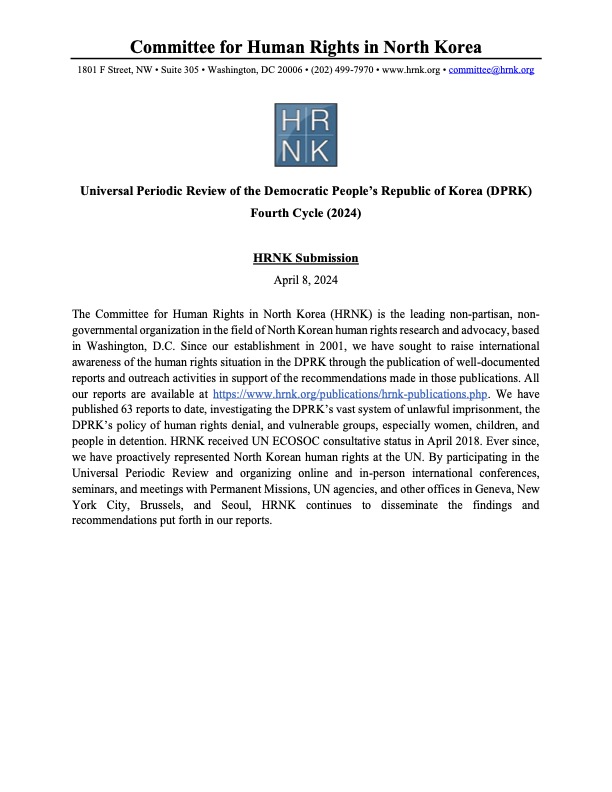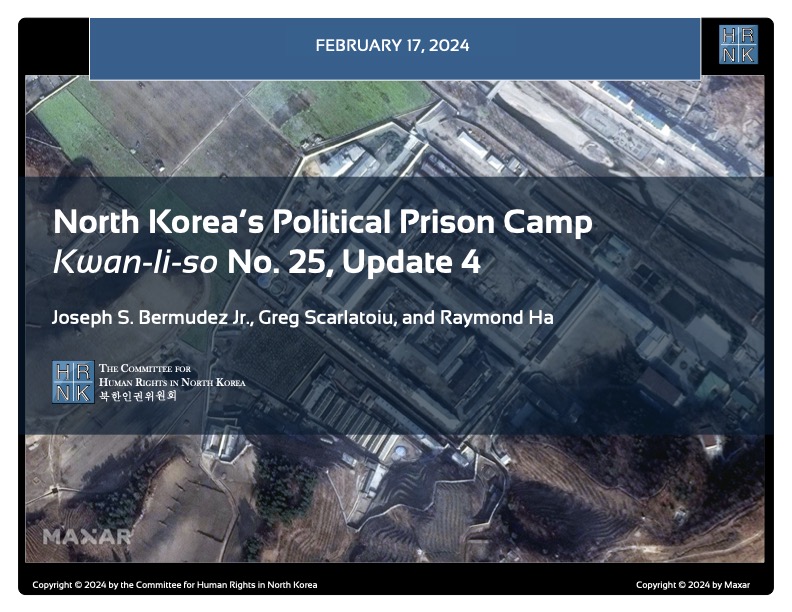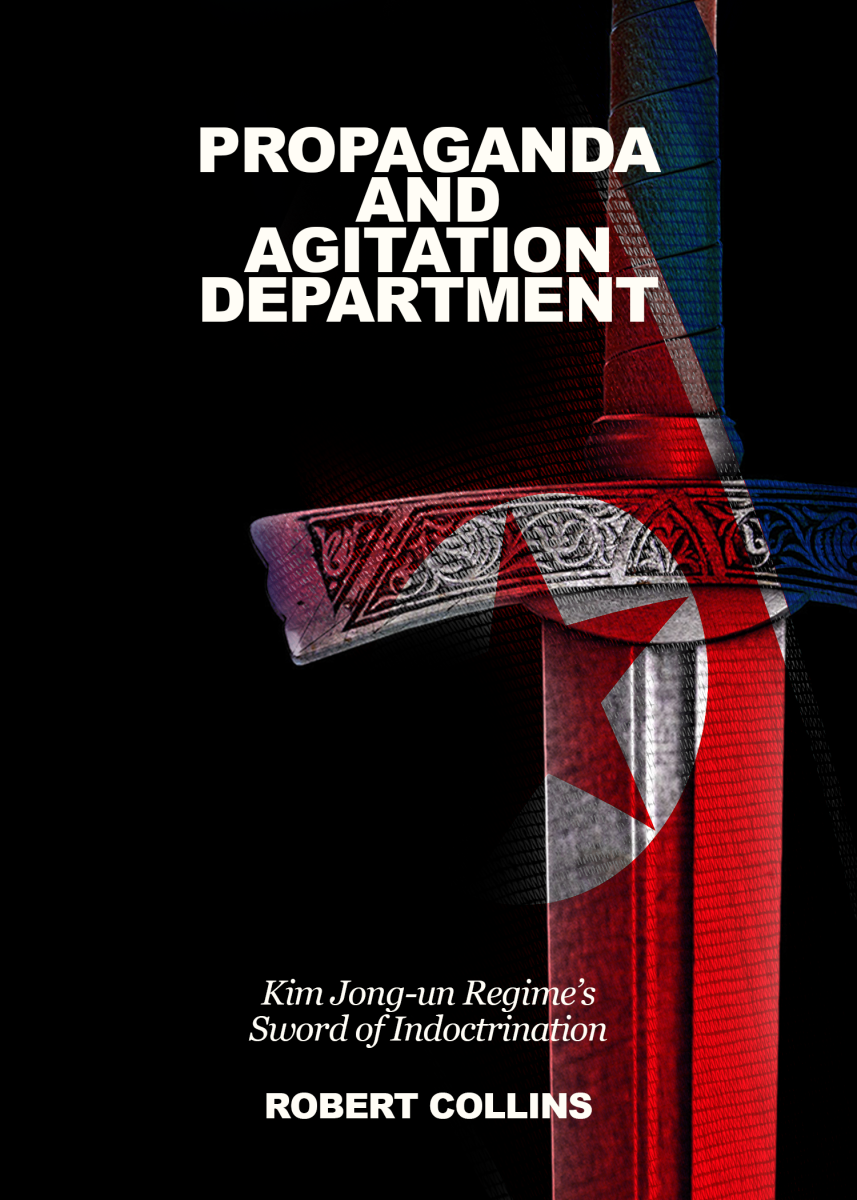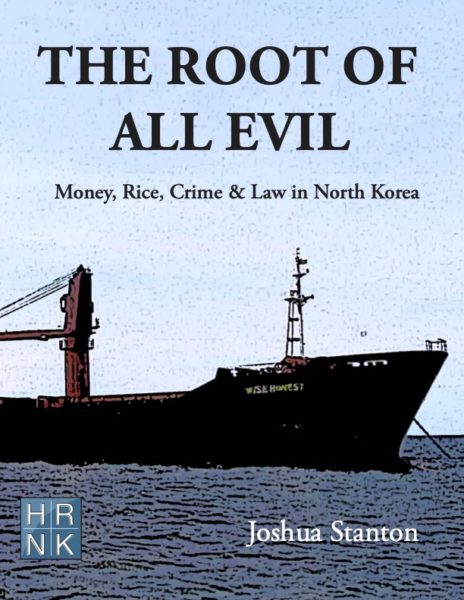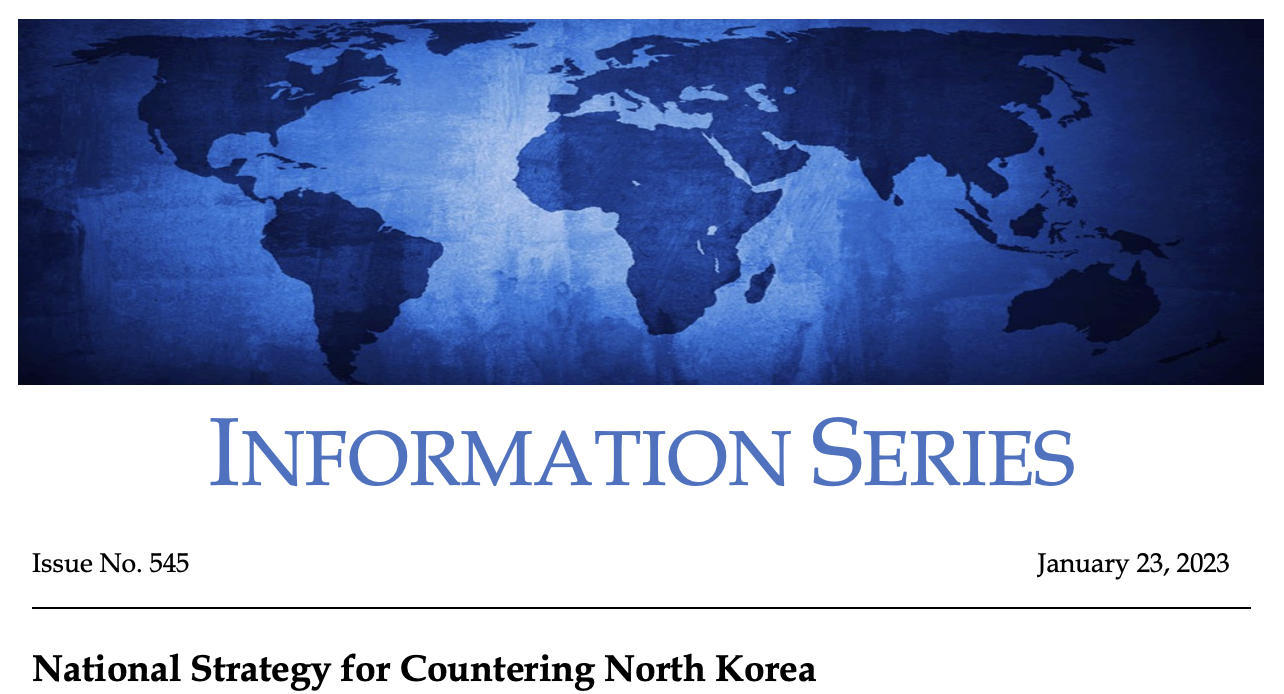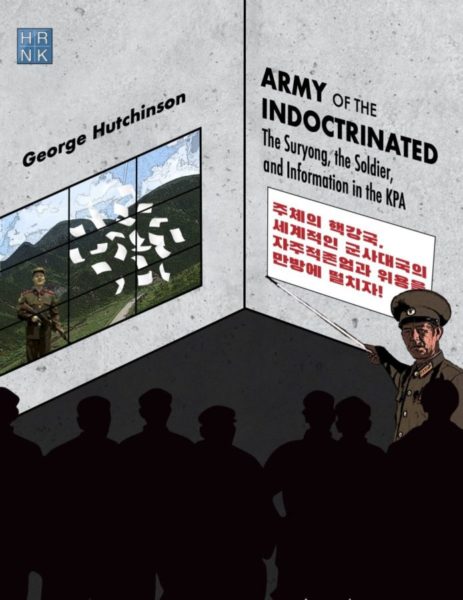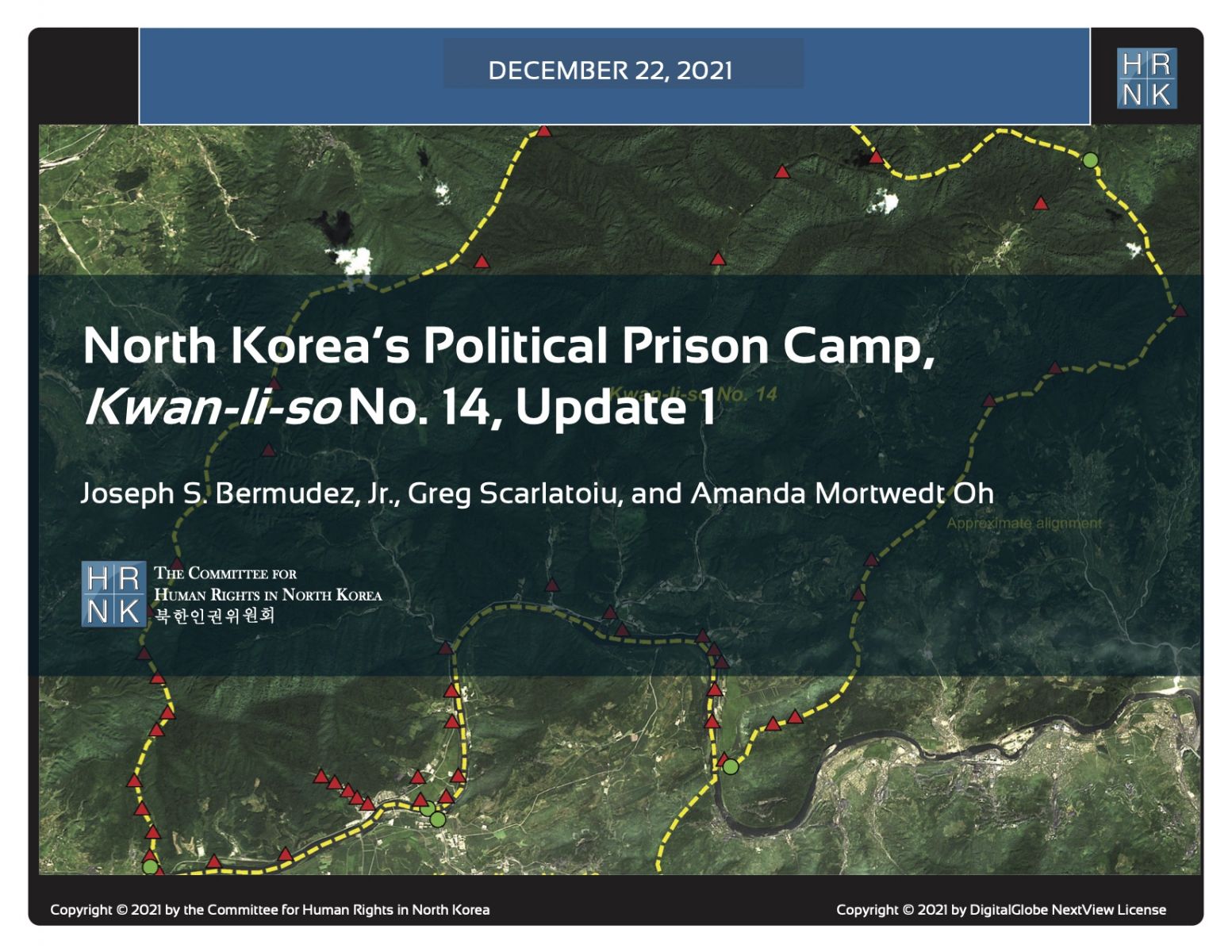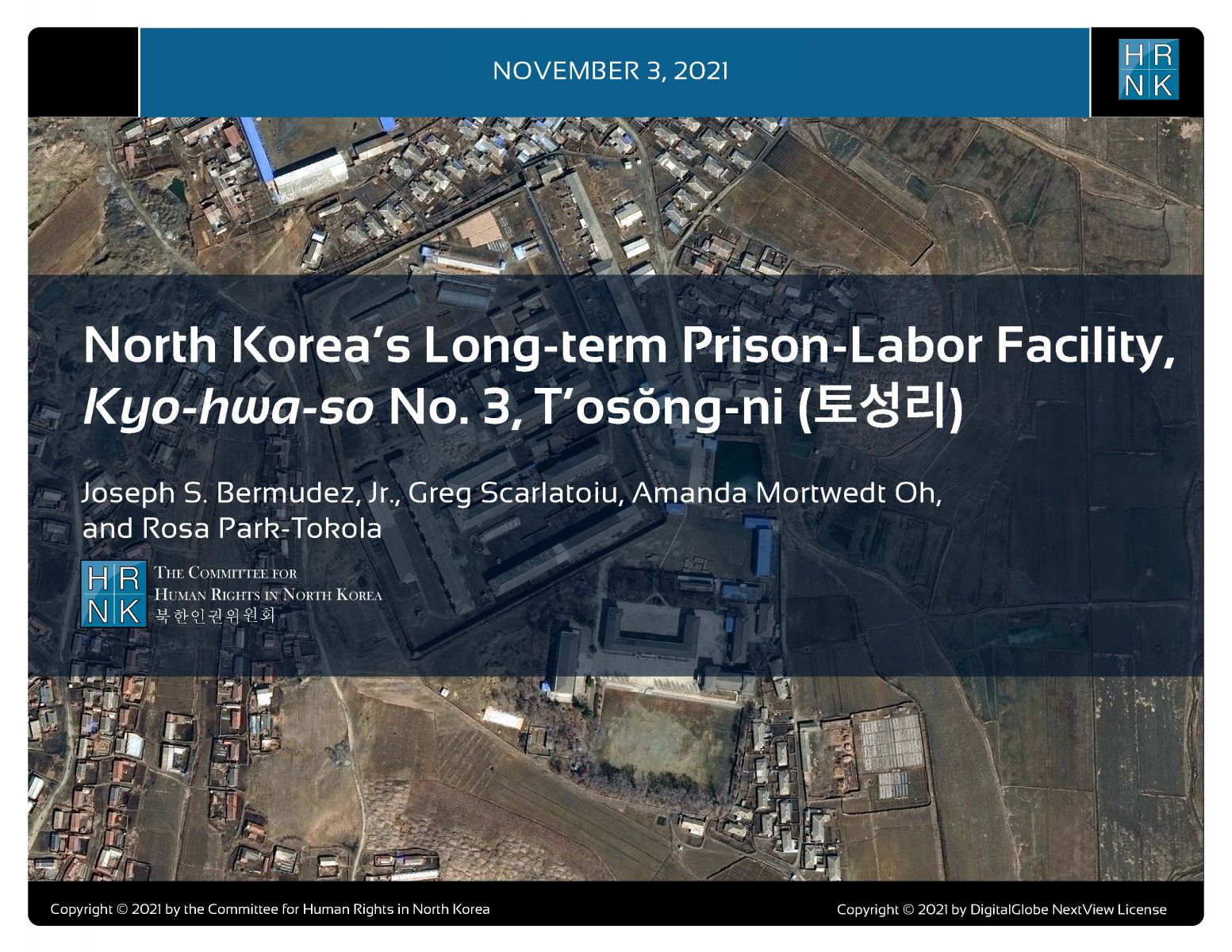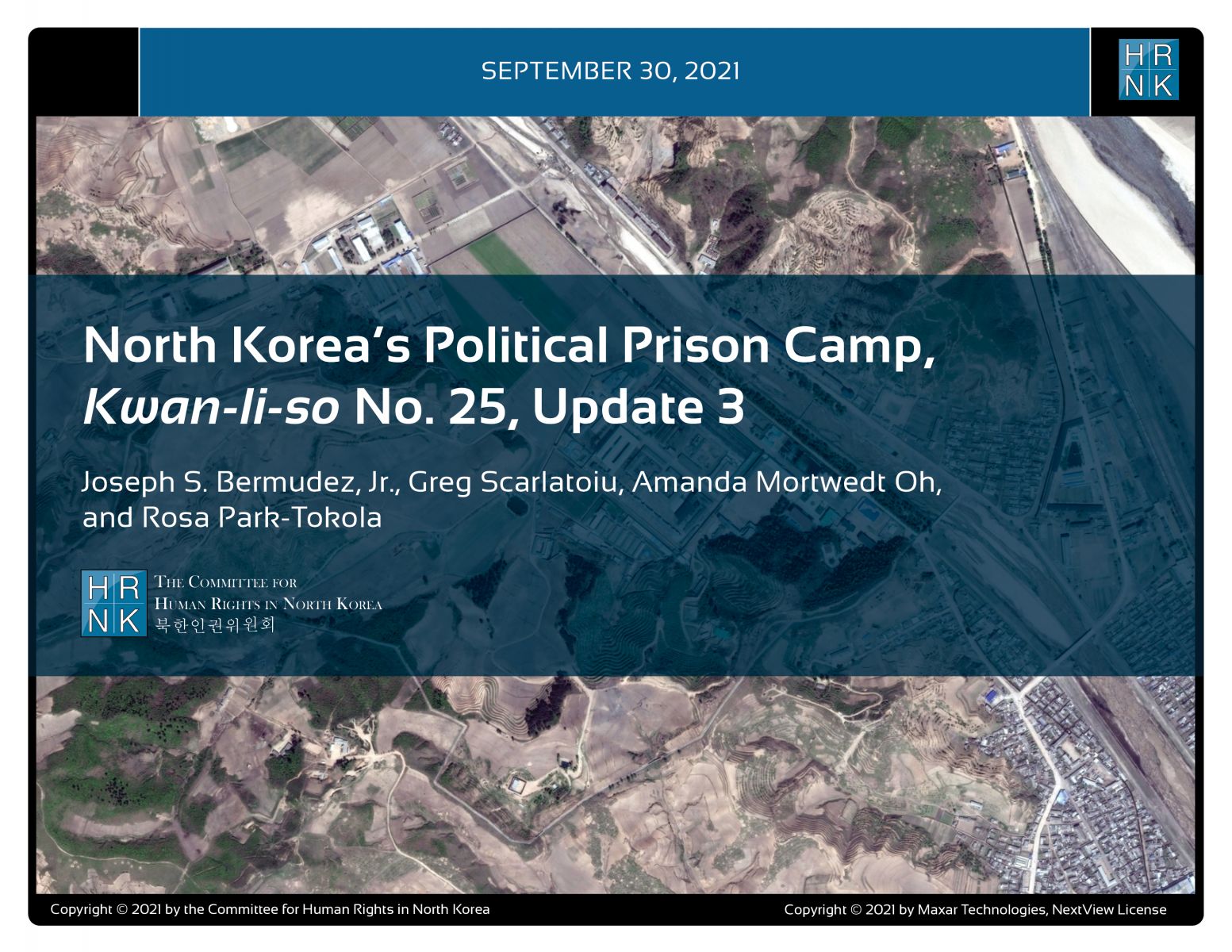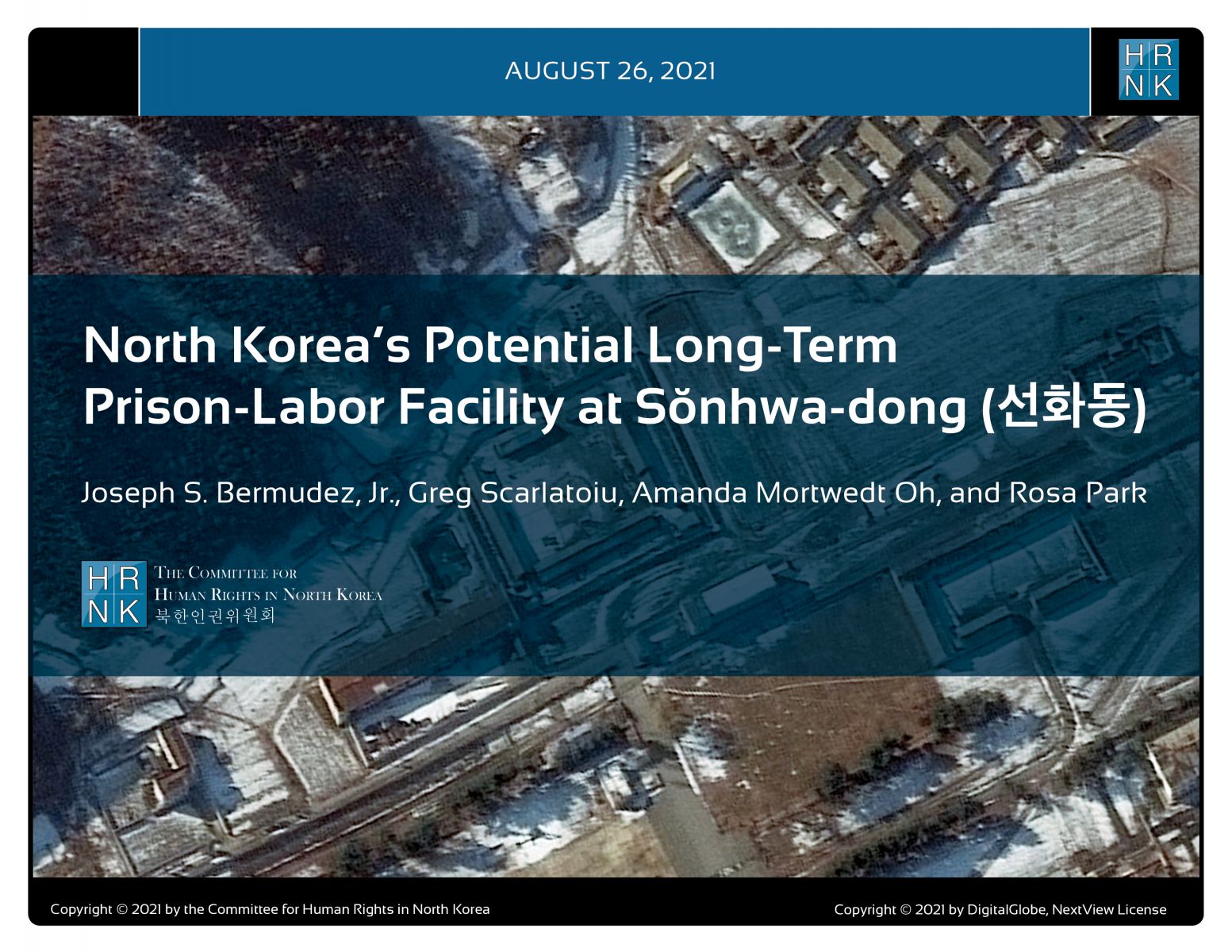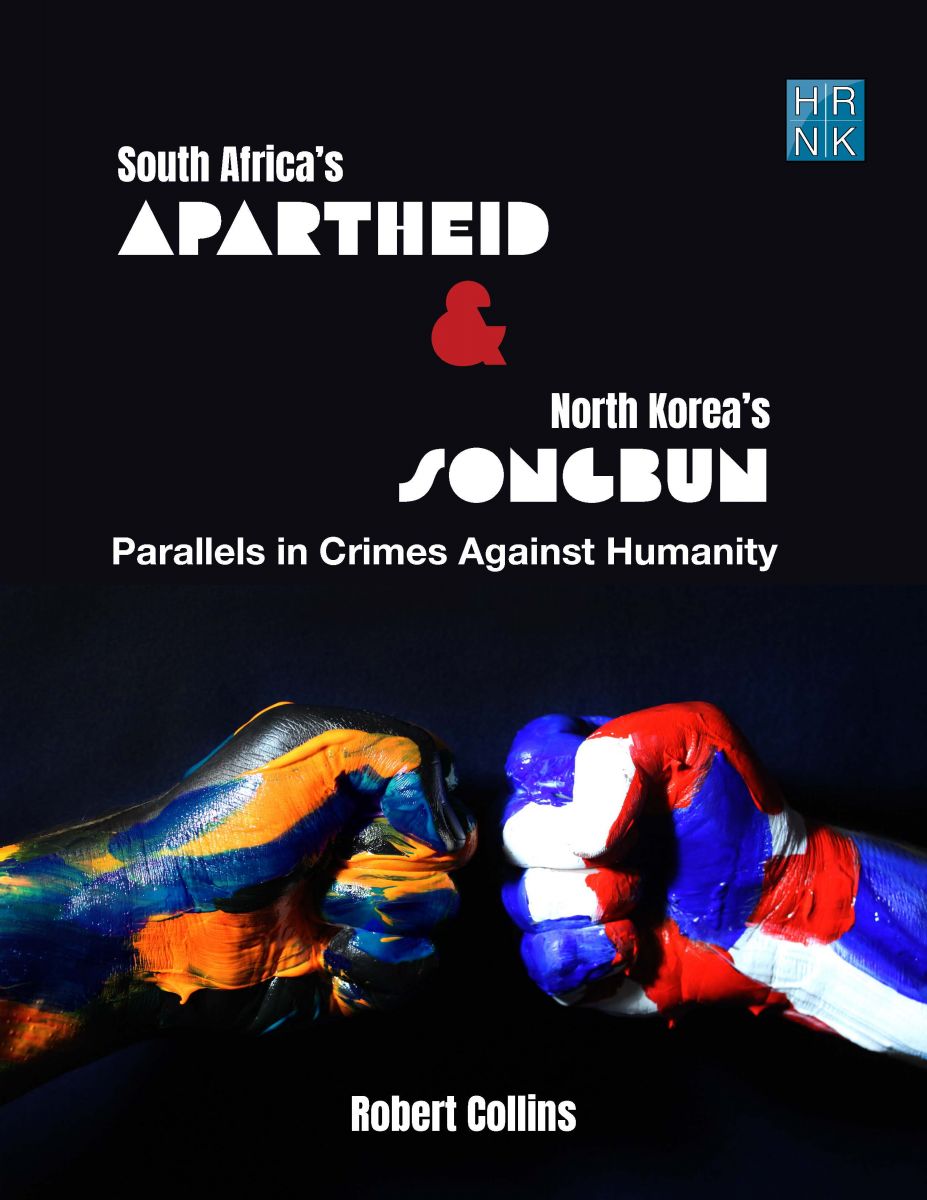WASHINGTON, August 16, 2017- The Committee of Human Rights in North Korea (HRNK), a non-governmental organization based in Washington, DC, set up a billboard in Times Square to advocate against widespread human rights violations in North Korea. Our video runs every 20 minutes on 43rd & Broadway and features three short clips of ten seconds each. Kicking off with a set of candles and “120,000 North Korean political prisoners are suffering,” we then display a NASA satellite image with the words “S.O.S., freedom and justice for North Koreans,” and finish off with a motion picture of barbed wires wrapping human figures that alludes to the state of life in North Korea’s “hidden gulags.”
.png)
First Clip: Candles
HRNK is the only US bipartisan NGO dedicated exclusively to researching and reporting on the North Korean human rights situation. We are the first organization to use satellite imagery of the political prison camps in North Korea along with testimony from escapees to scrutinize abuses perpetrated by the North Korean leadership. Since our founding in 2001, we have testified numerous times in front of Congress and published a significant amount of investigative work on North Korea. Our publications focus on how the North Korean regime abuses the human rights of its citizens, its vast system of political prisons and labor camps, the regime’s denial of equal access to food and goods, and the plight of refugees escaping through China. Our research, analysis, publications and outreach were critical in the establishment and investigation of the groundbreaking UN Commission of Inquiry on the human rights situation in North Korea.
As Professor David Maxwell, HRNK board member points out: “Twenty five million Koreans living in the north are suffering severe human rights conditions every day. The liberty, dignity, and well being of these Koreans have been under siege for nearly seven decades. It is a moral imperative that we work to end this suffering. We cannot turn a blind eye to the crimes against humanity taking place on the northern half of the Korean peninsula.”
Ambassador Winston Lord, HRNK board member notes: “If North Korea's nuclear program evokes images of future devastation, its barbaric regime has already condemned its people to a wasteland for decades. The bipartisan HRNK leads a gathering global movement to highlight and ease the suffering of North Koreans. It needs and deserves support in its campaign against the most gripping human rights challenge in the world.”

Second Clip: NASA Satellite Imagery
Your support is crucial to our outreach and the fate of our billboard, behind which stand 25 million helpless North Koreans who cannot speak for themselves. That being said, it is not just about them but also about us. The Kim dynastic dictatorship poses a severe threat to our homeland following the rogue regime’s rising nuclear power that is now capable of reaching the US states of Alaska and Hawaii. Too long have we viewed human rights and politics as separate entities while ignoring their highly correlated dynamics. On that note, HRNK board member Carl Gershman presents two policies necessary to dealing with such regime:
“The first is to contain North Korea by taking steps to deter its aggressive behavior, among them the imposition of comprehensive sanctions and the deployment in South Korea of an effective system of ballistic missile defense. The second is to change it by defending the human rights of the North Korean people. That means doing what we can to end their isolation from the outside world, to empower them, and to give them a voice in determining their country’s future. Only then might there emerge—from within the country’s elite class—people who realize that the current system is doomed and who want to seek a peaceful way to a better future.”
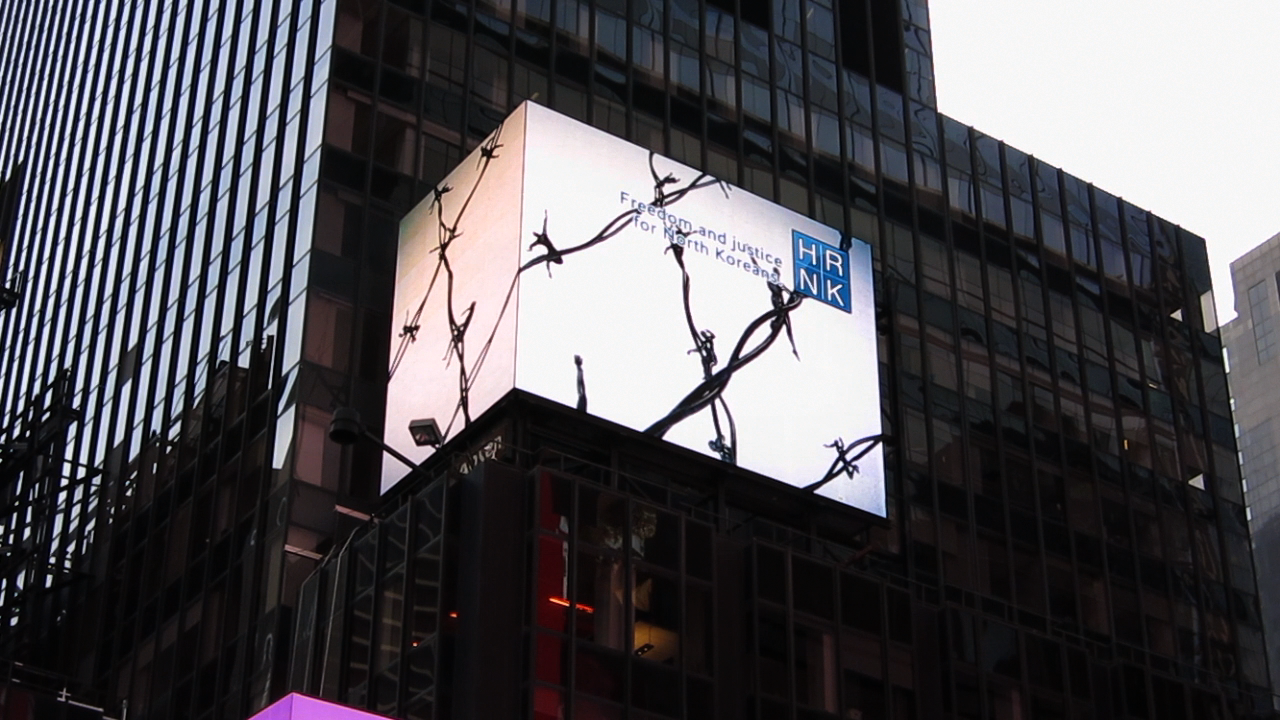
Following his account, we would highly appreciate your support in our endeavor to simultaneously educate the outside and enlighten the inside. In that process, this billboard is a symbol of monumental importance. In the words of veteran human rights investigator David Hawk, “The North Korean gulag is no longer hidden. Its web of political prisons and labor camps—many visible on Google Earth—is there for all to see. But the men and women trapped inside this are hidden still, subject to enforced disappearances, arbitrary detention, and forced labor under extremely harsh conditions.” With such immorality in mind, now is our chance to light up Times Square on behalf of those who are not lit, for if darkness is the absence of light then where light be, darkness will no longer be. As HRNK Executive Director Greg Scarlatoiu put it, “this billboard brings our deep concern for the plight of North Korean people right into the path of more than one million people going through Times Square every day.”
Billboard Videos:
Candles
NASA Satellite Imagery
Barbed Wire
Contact: Greg Scarlatoiu, [email protected]; 202-499-7973
Board of Directors
(Affiliations other than HRNK are for identification only)
Gordon Flake (Co-Chair)
Chief Executive Officer, Perth USAsia Centre, The University of Western Australia
Co-author, Paved with Good Intentions:The NGO Experience in North Korea
Katrina Lantos Swett (Co-Chair)
President and CEO, Lantos Foundation for Human Rights and Justice
John Despres (Co-Vice-Chair)
Consultant on International Financial & Strategic Affairs
Suzanne Scholte (Co-Vice-Chair)
President, Defense Forum Foundation
Seoul Peace Prize Laureate
Helen-Louise Hunter (Secretary)
Attorney
Author of Kim Il-Song’s North Korea
Kevin C. McCann (Treasurer)
Formerly of Counsel, Paul Hastings LLP
Roberta Cohen (Co-Chair Emeritus)
Specialist in Humanitarian and Human Rights Issues
Andrew Natsios (Co-Chair Emeritus)
Former Administrator, U.S. Agency for International Development
Director, Scowcroft Institute of International Affairs
Executive Professor, The Bush School of Government & Public Service,
Texas A&M University
Author of The Great North Korean Famine
Morton Abramowitz
Senior Fellow, The Century Foundation
Jerome Cohen
Co-Director, US-Asia Law Institute, NYU Law School
Adjunct Senior Fellow, Council on Foreign Relations
Lisa Colacurcio
Advisor, Impact Investments
Rabbi Abraham Cooper
Associate Dean, Simon Wiesenthal Center, Los Angeles
Jack David
Senior Fellow, Hudson Institute
Paula Dobriansky
Chair, World Affairs Council of America
Adjunct Senior Fellow, Belfer Center for Science and International Affairs,
Kennedy School of Government, Harvard University
Distinguished National Security Chair, U.S. Naval Academy
Nicholas Eberstadt
Henry Wendt Chair in Political Economy, American Enterprise Institute
Author of books on North Korea including North Korea in Transition: Politics, Economy, and Society
Carl Gershman
President, National Endowment for Democracy
Stephen Kahng
President, Kahng Foundation
David Kim
Coordinator, The Asia Foundation
Robert King
Former U.S. Special Envoy for North Korean Human Rights Issues
Debra Liang-Fenton
U.S. Institute of Peace
Former Executive Director, HRNK
Winston Lord
Former Assistant Secretary for East Asia, Department of State
Former Ambassador to China
Former Director of Policy Planning Staff, Department of State
Former President, Council on Foreign Relations
Former Chairman, National Endowment for Democracy
David Maxwell
Associate Director of the Center for Security Studies and the Security Studies Program,
Georgetown University
Colonel, U.S. Army (Ret.)
Marcus Noland
Executive Vice President and Director of Studies, Peterson Institute for International Economics
Author of books on North Korea including Avoiding the Apocalypse: the Future of the Two Koreas
Jacqueline Pak
Professor, George Washington University
Executive Director
Greg Scarlatoiu
In this submission, HRNK focuses its attention on the following issues in the DPRK:
- The status of the system of detention facilities, where a multitude of human rights violations are ongoing.
- The post-COVID human security and human rights status of North Korean women, with particular attention to sexual and gender-based violence (SGBV).
- The issue of Japanese abductees and South Korean prisoners of war (POWs), abductees, and unjust detainees.
This report provides an abbreviated update to our previous reports on a long-term political prison commonly identified by former prisoners and researchers as Kwan-li-so No. 25 by providing details of activity observed during 2021–2023.
This report was originally published on Tearline at https://www.tearline.mil/public_page/prison-camp-25.
This report explains how the Kim regime organizes and implements its policy of human rights denial using the Propaganda and Agitation Department (PAD) to preserve and strengthen its monolithic system of control. The report also provides detailed background on the history of the PAD, as well as a human terrain map that details present and past PAD leadership.
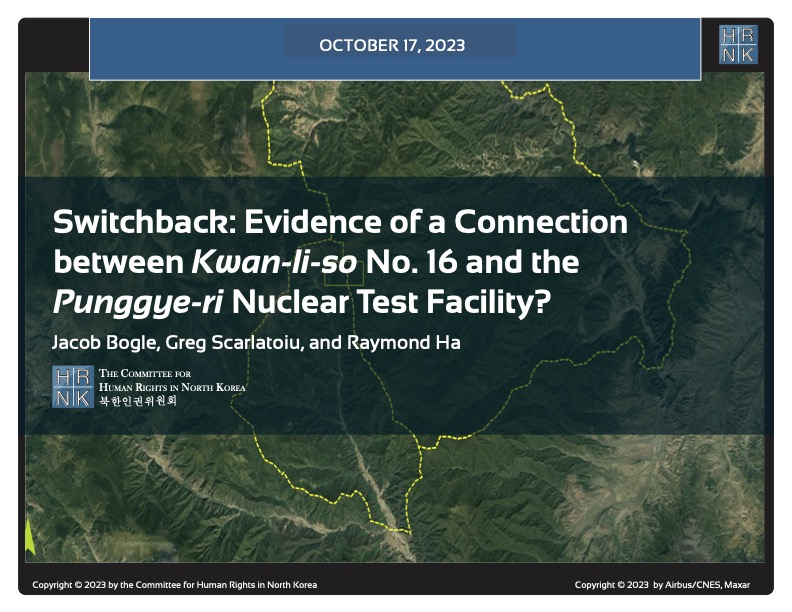
HRNK's latest satellite imagery report analyzes a 5.2 km-long switchback road, visible in commercial satellite imagery, that runs from Testing Tunnel No. 1 at North Korea's Punggye-ri nuclear test facility to the perimeter of Kwan-li-so (political prison camp) no. 16.
This report proposes a long-term, multilateral legal strategy, using existing United Nations resolutions and conventions, and U.S. statutes that are either codified or proposed in appended model legislation, to find, freeze, forfeit, and deposit the proceeds of the North Korean government's kleptocracy into international escrow. These funds would be available for limited, case-by-case disbursements to provide food and medical care for poor North Koreans, and--contingent upon Pyongyang's progress
For thirty years, U.S. North Korea policy have sacrificed human rights for the sake of addressing nuclear weapons. Both the North Korean nuclear and missile programs have thrived. Sidelining human rights to appease the North Korean regime is not the answer, but a fundamental flaw in U.S. policy.
(Published by the National Institute for Public Policy)
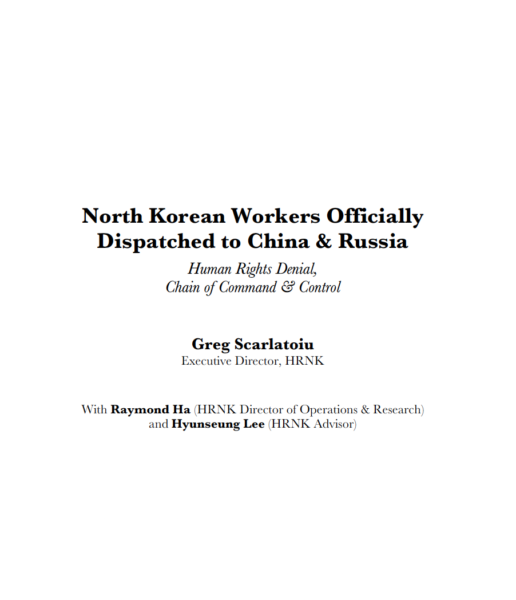
North Korea’s forced labor enterprise and its state sponsorship of human trafficking certainly continued until the onset of the COVID pandemic. HRNK has endeavored to determine if North Korean entities responsible for exporting workers to China and Russia continued their activities under COVID as well.
George Hutchinson's The Suryong, the Soldier, and Information in the KPA is the second of three building blocks of a multi-year HRNK project to examine North Korea's information environment. Hutchinson's thoroughly researched and sourced report addresses the circulation of information within the Korean People's Army (KPA). Understanding how KPA soldiers receive their information is needed to prepare information campaigns while taking into account all possible contingenc
This report is part of a comprehensive long-term project undertaken by HRNK to use satellite imagery and former prisoner interviews to shed light on human suffering in North Korea by monitoring activity at political prison facilities throughout the nation. This is the second HRNK satellite imagery report detailing activity observed during 2015 to 2021 at a prison facility commonly identified by former prisoners and researchers as “Kwan-li-so No. 14 Kaech’ŏn” (39.646810, 126.117058) and
This report is part of a comprehensive long-term project undertaken by HRNK to use satellite imagery and former prisoner interviews to shed light on human suffering in North Korea by monitoring activity at civil and political prison facilities throughout the nation. This study details activity observed during 1968–1977 and 2002–2021 at a prison facility commonly identified by former prisoners and researchers as "Kyo-hwa-so No. 3, T'osŏng-ni" and endeavors to e
This report is part of a comprehensive long-term project undertaken by HRNK to use satellite imagery and former detainee interviews to shed light on human suffering in the Democratic People’s Republic of Korea (DPRK, more commonly known as North Korea) by monitoring activity at political prison facilities throughout the nation. This report provides an abbreviated update to our previous reports on a long-term political prison commonly identified by former prisoners and researchers as Kwan-li-so<
Through satellite imagery analysis and witness testimony, HRNK has identified a previously unknown potential kyo-hwa-so long-term prison-labor facility at Sŏnhwa-dong (선화동) P’ihyŏn-gun, P’yŏngan-bukto, North Korea. While this facility appears to be operational and well maintained, further imagery analysis and witness testimony collection will be necessary in order to irrefutably confirm that Sŏnhwa-dong is a kyo-hwa-so.
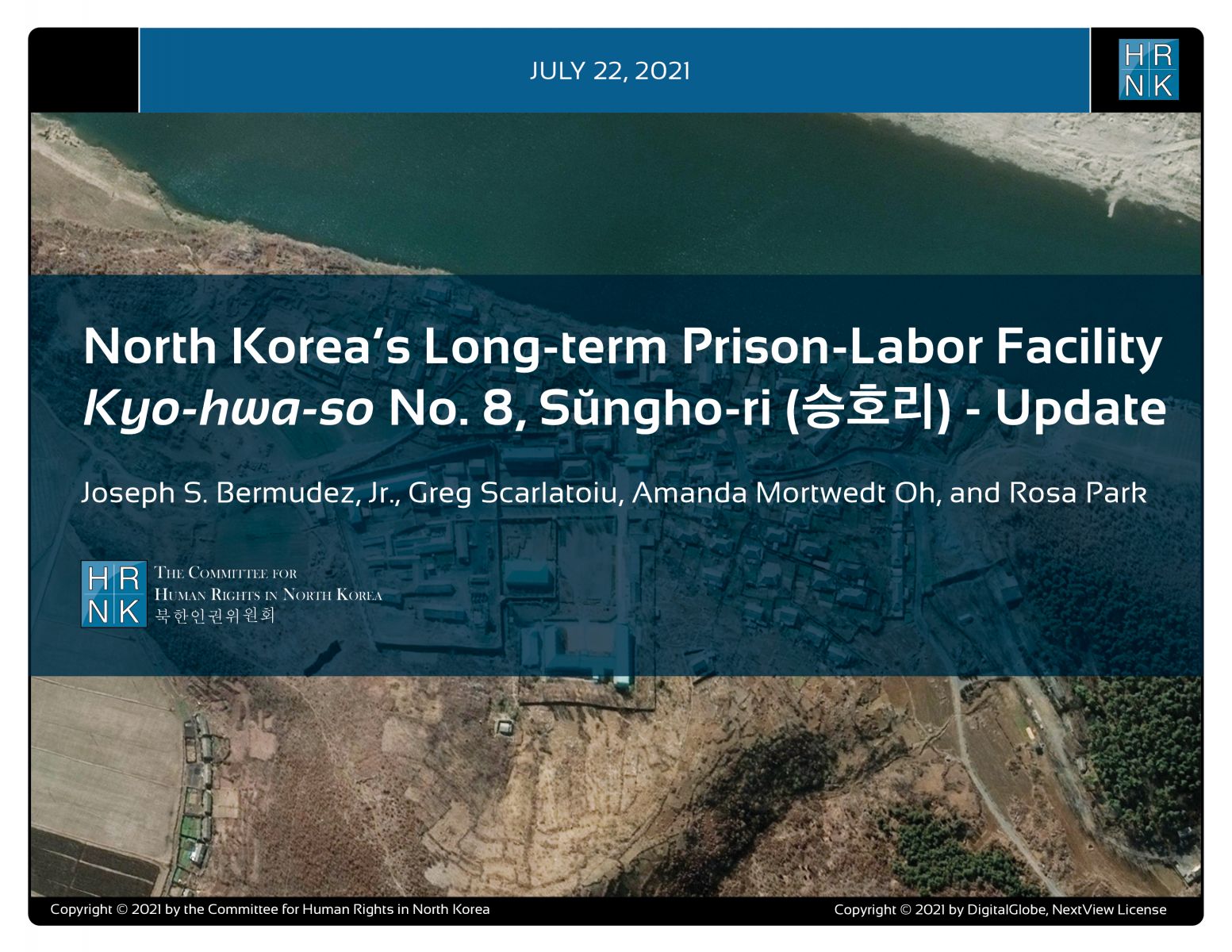
"North Korea’s Long-term Prison-Labor Facility Kyo-hwa-so No. 8, Sŭngho-ri (승호리) - Update" is the latest report under a long-term project employing satellite imagery analysis and former political prisoner testimony to shed light on human suffering in North Korea's prison camps.
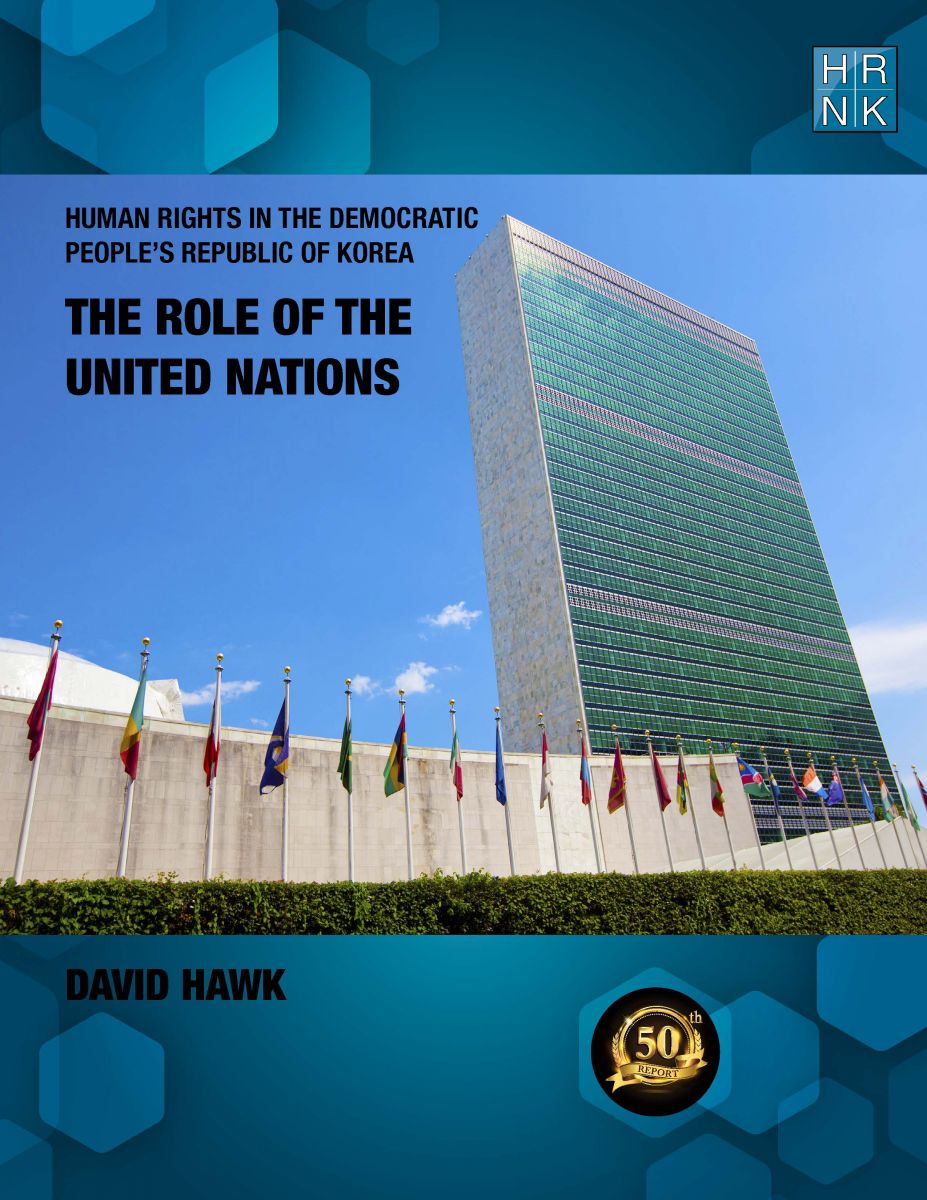
Human Rights in the Democratic Republic of Korea: The Role of the United Nations" is HRNK's 50th report in our 20-year history. This is even more meaningful as David Hawk's "Hidden Gulag" (2003) was the first report published by HRNK. In his latest report, Hawk details efforts by many UN member states and by the UN’s committees, projects and procedures to promote and protect human rights in the DPRK. The report highlights North Korea’s shifts in its approach
South Africa’s Apartheid and North Korea’s Songbun: Parallels in Crimes against Humanity by Robert Collins underlines similarities between two systematically, deliberately, and thoroughly discriminatory repressive systems. This project began with expert testimony Collins submitted as part of a joint investigation and documentation project scrutinizing human rights violations committed at North Korea’s short-term detention facilities, conducted by the Committee for Human Rights
